Introduction to Pediatric Cough and Wheezing
Cough and wheezing are common respiratory symptoms in children, presenting critical challenges for caregivers and healthcare providers alike. Understanding their causes, seasonal patterns, and contributing environmental and epidemiological factors is essential to improving diagnosis, management, and prevention strategies. Recent scientific studies offer valuable insights into the dynamics of pediatric respiratory conditions, including the impacts of viral infections, air quality, and climate change. This article delves into these aspects to provide a comprehensive overview relevant to parents, clinicians, and public health experts.
Causes of Wheezing in Children
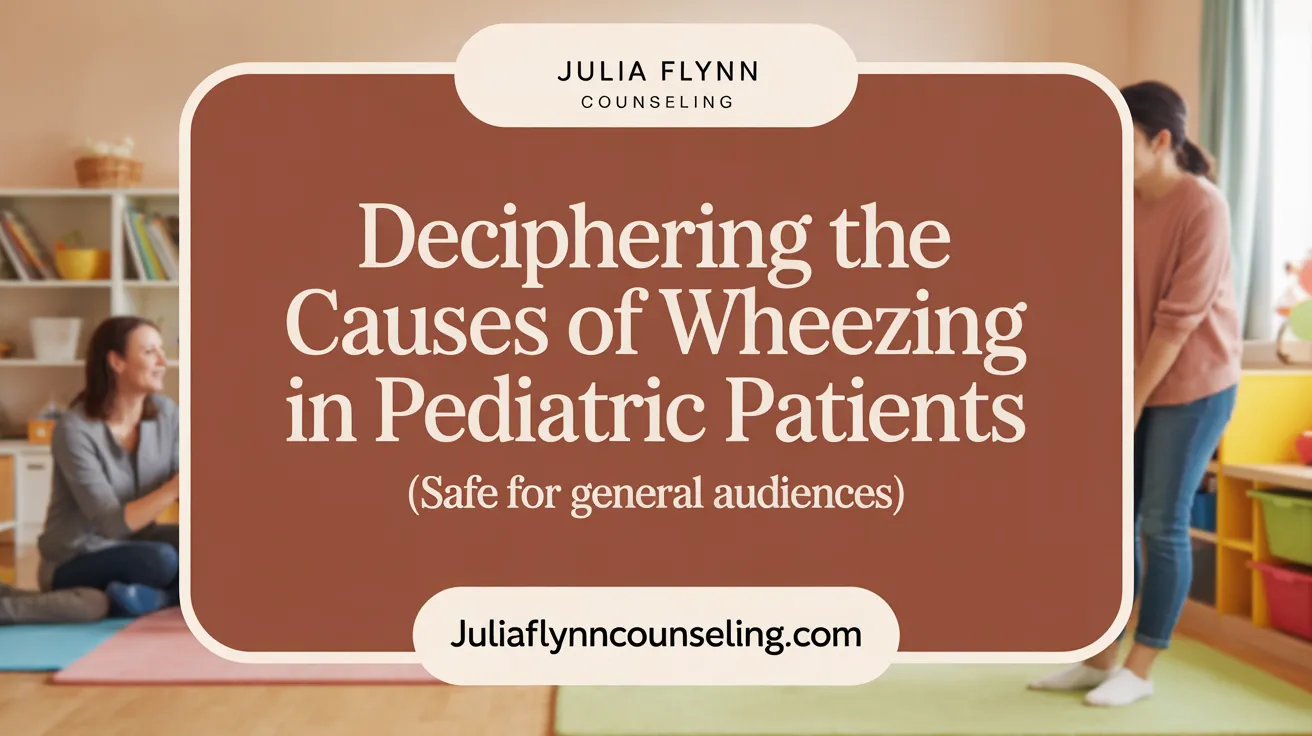
What are the common causes of wheezing in children?
Wheezing in children can result from a variety of health conditions, with asthma being the most prevalent, especially in those under five years old. Asthma often involves inflammation and narrowing of the airways, which can be triggered by allergens like pollen, dust, pet dander, or respiratory viruses such as respiratory syncytial virus (RSV) and rhinovirus. These triggers lead to symptoms like wheezing, coughing, and difficulty breathing.
In addition to asthma, respiratory infections play a significant role. Bronchiolitis in infants, frequently caused by RSV, and bronchitis are common viral illnesses that can cause wheezing. Allergic reactions not only provoke asthma symptoms but can also cause airway swelling. Structural abnormalities in the airway, foreign body aspiration, and vocal cord dysfunction are other medical conditions that may provoke wheezing. Environmental factors such as tobacco smoke and air pollution can exacerbate these conditions.
Diagnosis of the cause of wheezing incorporates several methods. Spirometry and lung function tests are valuable in older children to assess airway obstruction. Chest X-rays help identify external causes like foreign bodies or structural abnormalities. In some cases, bronchoscopy may be necessary to visualize the airways directly. Allergy testing can identify potential triggers, guiding avoidance strategies and treatment.
Examples of clinical patterns and triggers
Studies have categorized children into different clusters based on wheezing patterns and triggers. For instance, children with multiple triggers like infections and cold weather tend to have more severe disease.
This allows healthcare providers to tailor management approaches, addressing the underlying cause effectively and reducing the risk of severe exacerbations.
| Cause Type | Typical Conditions | Diagnostic Methods | Notes |
|---|---|---|---|
| Infectious | RSV bronchiolitis, bronchitis, pneumonia | Chest X-ray, viral swabs, clinical history | Common in winter, especially in infants |
| Allergic | Atopic asthma, allergic rhinitis | Skin prick tests, IgE levels | Elevated risk in children with family allergies |
| Structural | Congenital anomalies, foreign body | Imaging, bronchoscopy | Often causes persistent wheezing |
| Other conditions | Vocal cord dysfunction, GERD | Laryngoscopy, pH monitoring | May mimic asthma symptoms |
Understanding these various causes and their diagnostic pathways can significantly improve management and outcomes for children experiencing wheezing.
Sudden Onset of Coughing and Wheezing: Causes and Urgency
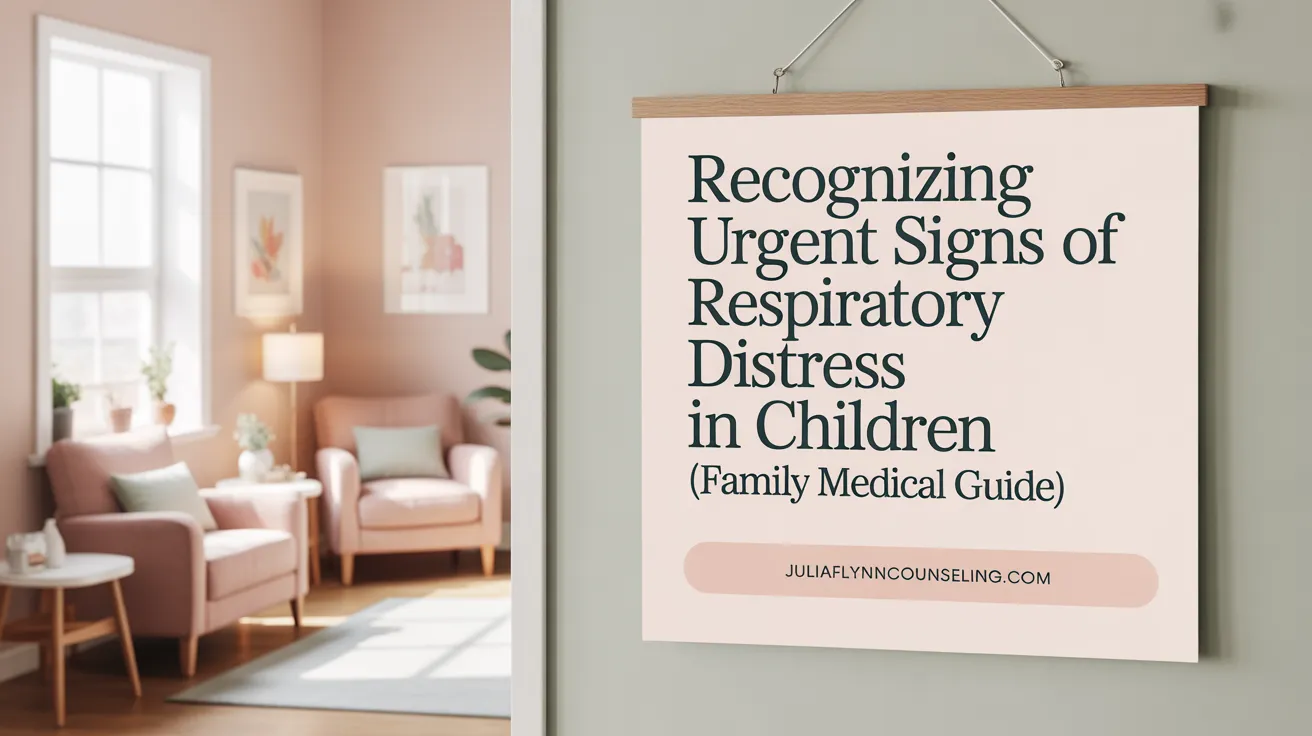
Why might a child suddenly develop coughing and wheezing?
A sudden appearance of coughing and wheezing in children can be alarming and often indicates an acute respiratory issue that requires prompt attention. Several conditions can cause these symptoms suddenly, and understanding their causes helps in deciding the urgency of medical care.
Viral infections are the most common culprits, especially in infants and young children. Respiratory syncytial virus (RSV) and bronchiolitis frequently lead to airway inflammation, resulting in wheezing and cough. Such infections are particularly prevalent in children under 2 years old, with studies showing high infection rates in this age group.
Older children with asthma may also experience sudden episodes of coughing and wheezing triggered by various factors. Asthma is a chronic condition characterized by airway inflammation and hyperresponsiveness. Common triggers include allergens such as pollen, pet dander, or dust, as well as respiratory infections, exposure to cold air, physical activity, or irritants like tobacco smoke.
Foreign body aspiration is another serious cause, especially in children aged 1 to 4 years. Small objects like nuts, toys, or food pieces can be inhaled accidentally, leading to airway obstruction. Symptoms in such cases include sudden coughing, choking, and wheezing, often accompanied by difficulty breathing or cyanosis.
Additionally, conditions like croup—a viral illness causing swelling around the voice box—can produce abrupt coughing fits and breathing difficulties. Allergic reactions may also cause sudden wheezing if the child is exposed to an allergen, leading to airway narrowing.
Severe signs warrant immediate emergency care. These include significant chest retractions, rapid breathing, bluish lips or face, inability to speak or cry, and exhaustion from effort. Quick medical intervention is vital to prevent respiratory failure.
In summary, a sudden cough and wheeze in a child can stem from viral infections, asthma attacks, foreign bodies, or allergic reactions. Recognizing the severity and associated symptoms helps determine when urgent medical attention is needed to ensure the child's safety and proper treatment.
Respiratory Conditions Associated with Wheezing Cough in Children

What conditions are associated with a wheezing cough in children?
A wheezing cough in children is a common symptom linked to various respiratory conditions. The most prevalent and well-known causes include bronchiolitis and asthma. Bronchiolitis primarily affects infants and is often caused by respiratory syncytial virus (RSV), which leads to inflammation and obstruction in the small airways. In older children, asthma is frequently characterized by inflammation and narrowing of the airways, which results in episodes of wheezing, coughing, and difficulty breathing.
Viral infections play a significant role in triggering wheezing episodes. RSV and influenza are major culprits, causing airway inflammation that manifests as wheezing and coughing. These viral agents can also predispose children to secondary bacterial infections, such as pneumonia.
Environmental irritants are also important contributors. Exposure to tobacco smoke, pollution, and allergens like pollen and mold can provoke airway hyperresponsiveness, leading to wheezing and cough. Sometimes, a sudden onset of wheezing may be due to foreign body inhalation, especially in young children,
Moreover, croup causes a characteristic bark-like cough along with wheezing and stridor, resulting from upper airway swelling. Bacterial pneumonia can also cause wheezing, but typically presents with high fever and productive cough.
In summary, conditions associated with a wheezing cough in children include bronchiolitis, asthma, viral and bacterial infections such as RSV and pneumonia, allergic reactions, and sometimes physical obstruction from foreign bodies. Recognizing these underlying causes helps in guiding appropriate treatment and management strategies.
Seasonality of Asthma Symptoms and Weather-Related Triggers
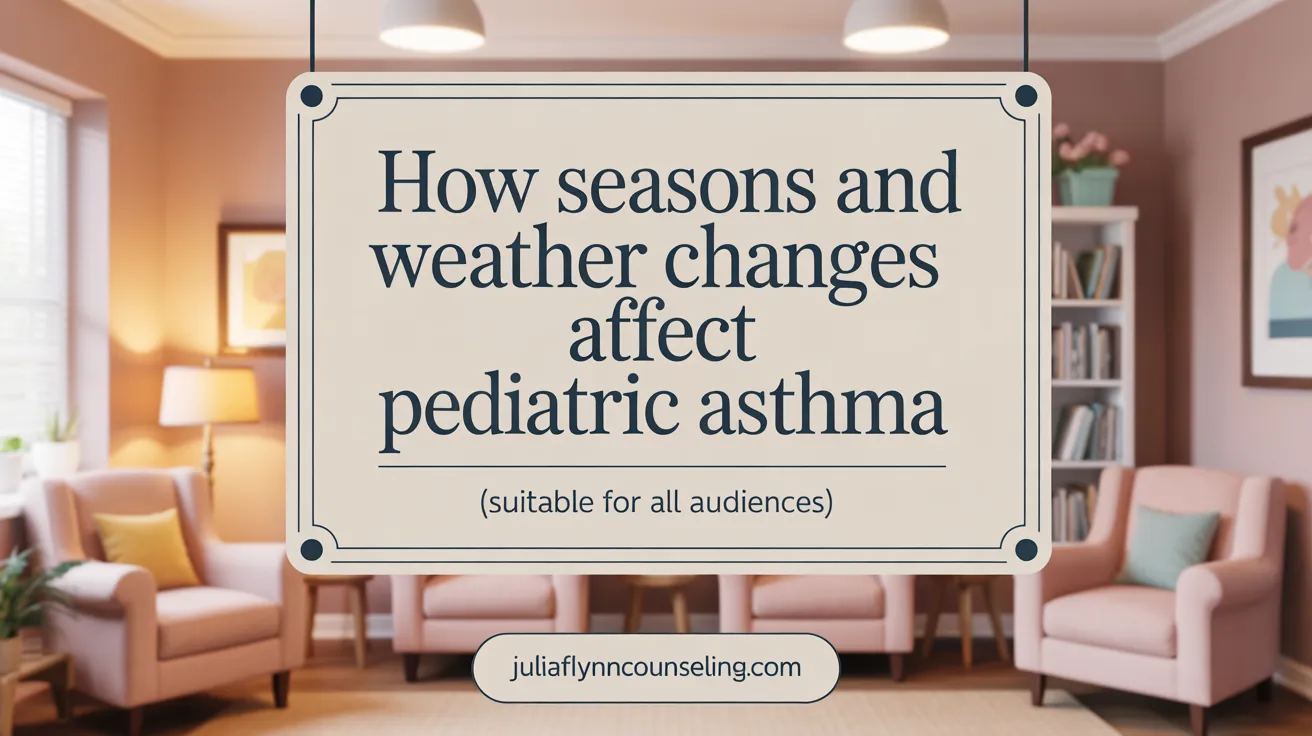
Can asthma symptoms in children be seasonal or triggered by weather changes?
Yes, asthma symptoms in children often exhibit seasonal patterns, with certain times of year seeing increased episodes. Weather changes such as cold air, temperature fluctuations, and storms can irritate children's airways, leading to heightened asthma symptoms.
During spring and fall, exposure to outdoor allergens like pollen and mold spores skyrockets, further aggravating asthma. In summer, elevated temperatures and humidity raise pollen and mold levels, increasing the likelihood of exacerbations.
Environmental factors like air pollution also play a significant role. For instance, higher levels of ozone and particulate matter during heat waves intensify respiratory issues. Additionally, viral respiratory infections, common in colder months, act as major triggers.
Children's outdoor activities, which increase during favorable weather, expose them to airborne particles, allergens, and pollutants. For example, cold air can cause airway constriction, while thunderstorms often release allergenic pollen and mold spores, worsening asthma.
Strategies to manage seasonal triggers include avoiding outdoor exposure during high pollen days, using air purifiers indoors, adhering to prescribed medications, and monitoring weather forecasts. Proper awareness and adjustment of activities can help prevent severe attacks.
In summary, seasonal variations and weather-related factors significantly influence asthma severity in children. Recognizing these patterns enables better management, reducing emergency visits and improving quality of life.
Impact of COVID-19 Pandemic on Pediatric Respiratory Illness Seasonality

How were seasonal peaks of pediatric respiratory illnesses affected during the pandemic?
The COVID-19 pandemic significantly disrupted the usual seasonal patterns of respiratory illnesses in children. Traditionally, conditions like asthma exacerbations peak after the summer, often around the start of the school year in September, due to exposure to allergens, viral infections, and environmental factors. However, during the pandemic, these seasonal peaks were less predictable.
A notable change was the emergence of a new peak in June 2020, termed 'back-from-lockdown' (BFL) asthma. This occurred approximately two weeks after the easing of the longest lockdown, indicating a direct influence of social behavior and restrictions on disease patterns.
The overall seasonal increase in asthma exacerbations during the fall, especially September, was diminished. Instead, the typical return to school activity was associated with a transient spike, followed by fluctuations extending into late fall and winter. During this period, respiratory illnesses like bronchiolitis and pneumonia showed altered seasonal trends, with some months experiencing lower incidence rates.
What was the decline in pediatric respiratory illnesses and hospitalizations?
The pandemic brought about a remarkable decline in pediatric respiratory health issues. Emergency department visits for respiratory diagnoses dropped by around 40%, while hospital admissions decreased between 54% and 73% in the first year of COVID-19 compared to previous years. These reductions reflect fewer viral infections and other respiratory triggers, likely due to public health measures.
For example, the prevalence of respiratory syncytial virus (RSV) detected via nasal swabs was significantly lower during the pandemic, with positivity rates dropping from 21.6% to just 4.3%. Similarly, hospitalizations for bronchiolitis and pneumonia were notably reduced, though the precise timing of decreases varied across months.
How did COVID-19 mitigation measures influence respiratory illnesses?
Measures such as social distancing, mask-wearing, school closures, and lockdowns played a pivotal role in reducing the transmission of respiratory viruses. These strategies not only curbed COVID-19 spread but also decreased the circulation of other common pathogens responsible for respiratory illnesses.
This indirect effect was visible in the decline of illnesses like RSV, influenza, and other viral infections which are known triggers of asthma exacerbations. Consequently, there was a decrease in emergency care utilization for respiratory issues among children.
The pandemic highlighted how behavioral and societal interventions can profoundly impact respiratory health. Moving forward, understanding these effects can help design public health strategies that mitigate the seasonal burden of respiratory illnesses beyond COVID-19.
| Aspect | Changes During Pandemic | Impact Explanation |
|---|---|---|
| Seasonal peaks | Altered or absent typical peaks | Public health measures disrupted usual virus transmission cycles |
| Respiratory infections | Significant decline | Reduced circulation of viruses like RSV and influenza |
| Hospitalizations | Decreased by 54–73% | Fewer severe cases due to lower infection rates |
| Influence of mitigation | Strong | Measures like masking and distancing limited pathogen spread |
This evolving understanding underscores the importance of considering environmental and behavioral factors in managing pediatric respiratory health. Supporting ongoing research will enable better preparedness for future respiratory seasons.
Blood Inflammatory Phenotypes and Seasonal Asthma Exacerbations
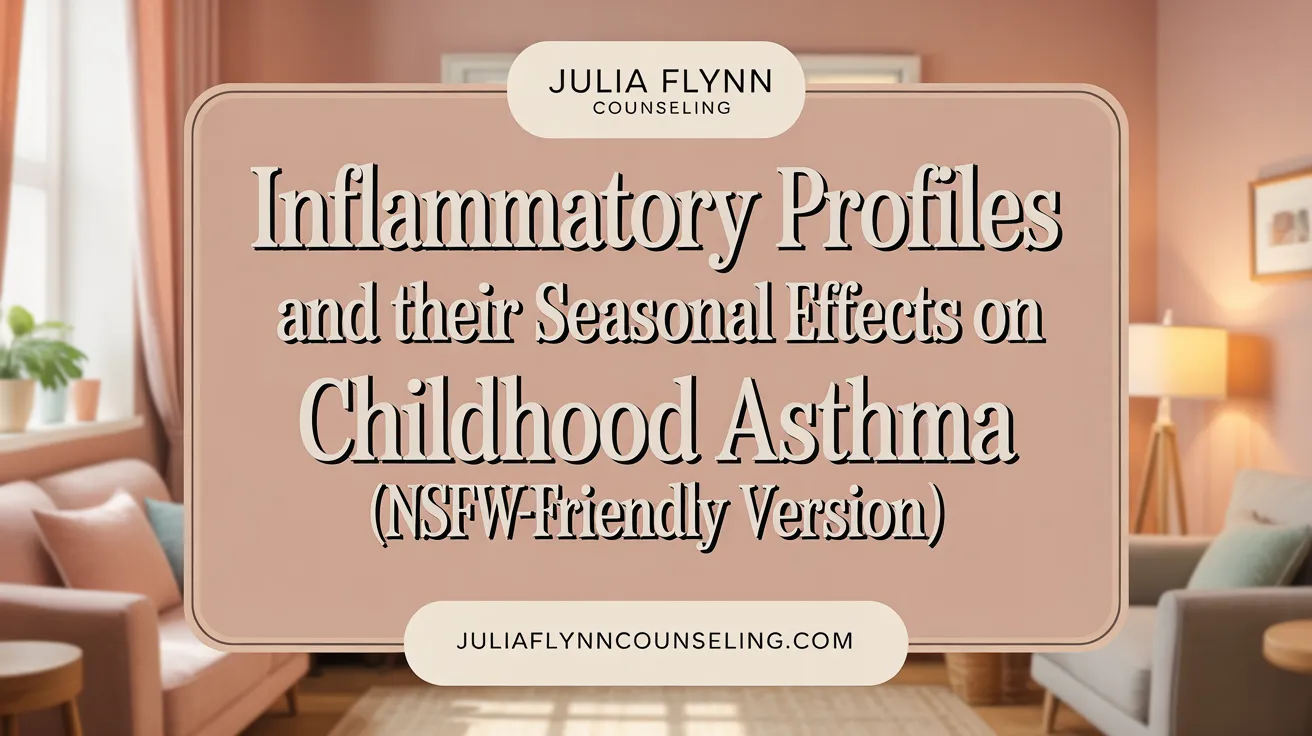
How do eosinophils and neutrophils influence pediatric asthma?
Blood eosinophils and neutrophils are important indicators of asthma severity and risk of exacerbations in children. Elevated eosinophil levels are often associated with allergic inflammation and tend to predict increased exacerbation risk, especially during colder months. On the other hand, higher neutrophil counts can indicate a different inflammation pattern linked to more severe or persistent asthma.
A study found that a rise of 109/L in eosinophils was linked to a 1.057-fold increase in the odds of asthma attacks. Similarly, a 109/L increase in neutrophils was associated with a 1.015-fold rise in exacerbation risk. These findings suggest that blood inflammatory profiles can help identify children at higher risk of severe episodes.
Which asthma phenotypes are associated with higher exacerbation risks?
Researchers have identified distinct inflammatory phenotypes that correlate with different asthma behaviors. One such phenotype, characterized by high eosinophils and low neutrophils (HBE/LBN), shows a 1.232-fold increased likelihood of exacerbations during winter and autumn. This phenotype is often more responsive to allergic triggers.
Children with low levels of both eosinophils and neutrophils (LBE/LBN) tend to have a decreased risk of attacks across seasons, with their odds reduced to 0.873 compared to other groups. These variations in blood cell counts reflect underlying immune responses that influence disease severity.
How do seasonal patterns affect exacerbation risks?
Seasonal changes significantly influence pediatric asthma exacerbations. During colder months, especially winter, children with certain inflammatory profiles are more prone to attacks. For instance, the HBE/LBN phenotype increases in prevalence during winter and autumn, correlating with the natural rise in respiratory infections and allergen exposure.
Additionally, environmental factors such as air pollution and seasonal allergen levels—like pollen and mold—amplify the risk during particular seasons. The combination of immune response patterns and external triggers explains the observed peaks in asthma attacks around specific times of the year.
| Phenotype | Exacerbation Risk in Season | Typical Blood Markers | Associated Triggers |
|---|---|---|---|
| HBE/LBN (High eos, Low neutro) | Higher in winter & fall | Elevated eosinophils, low neutrophils | Allergens, cold air, viral infections |
| LBE/LBN (Low eos, Low neutro) | Lower across all seasons | Low eosinophils and neutrophils | Fewer triggers, milder episodes |
Understanding these inflammatory profiles aids clinicians in predicting seasonal risks and tailoring management strategies to improve outcomes for pediatric asthma patients.
Environmental Pollutants and Their Role in Childhood Wheezing and Asthma
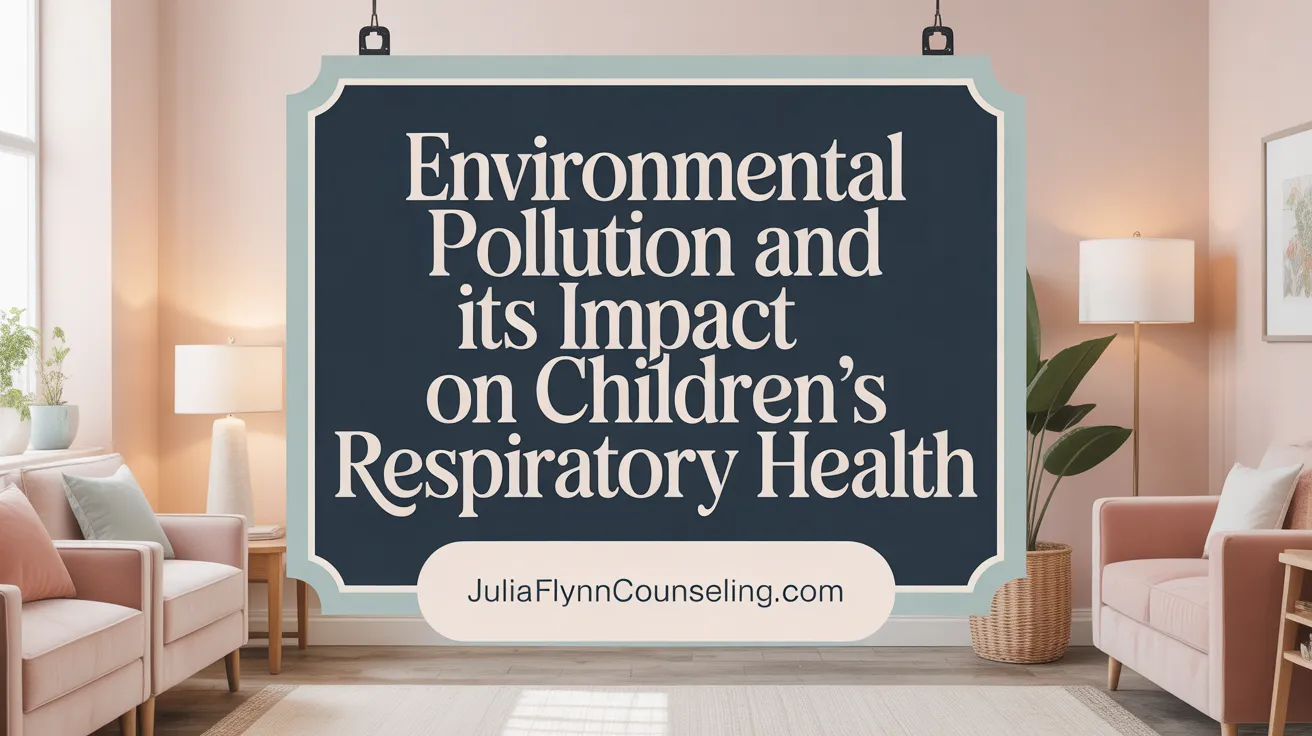
How do effects of PM2.5, PM10, NO2, SO2, and CO influence children's respiratory health?
Particulate matter and gases from pollution significantly impact children's respiratory systems. PM10 and PM2.5, tiny particles suspended in the air, can penetrate deep into the lungs. Elevated levels of these particles, especially above the US EPA standard of 50 μg/m³ for PM10, are linked to increased respiratory symptoms such as cough and rhinitis in children.
Gases like nitrogen dioxide (NO2), sulfur dioxide (SO2), and carbon monoxide (CO) also contribute to respiratory issues. For example, higher CO2 levels (>1000 ppm), often indicating poor ventilation, correlate with increased risks of dry cough and rhinitis.
Indoor pollution sources, including cooking and heating, can raise particulate levels more than outdoor sources, exacerbating symptoms. Studies in European classrooms reveal frequent indoor PM10 levels exceeding safety standards, highlighting the importance of air quality management in schools.
What is the synergy between air pollution and allergens?
Air pollution does not act alone; it magnifies the effects of allergens like pollen, mold spores, and dust mites. Pollutants such as ozone and PM2.5 enhance allergic airway inflammation, worsening asthma and wheezing episodes. For instance, higher pollution levels combined with high pollen counts lead to increased hospitalization rates for children with asthma.
The synergistic effect occurs because pollutants damage airway linings, making them more sensitive to allergens, thereby intensifying allergic reactions and respiratory symptoms.
How do indoor and outdoor pollution impacts differ?
Indoor pollution is often more concentrated due to sources like cooking, poor ventilation, and indoor activities, which can cause higher particulate levels than outdoor air. This leads to increased nasal congestion, cough, and wheezing, especially in children with asthma.
Outdoor pollution, driven by traffic emissions, industrial activities, and climate factors, fluctuates with weather patterns and seasons. During heat waves or cold spells, pollutant levels tend to spike, correlating with higher emergency visits for respiratory issues.
Both indoor and outdoor pollution contribute to long-term health effects, such as reduced lung development and heightened asthma severity. Thus, improving indoor air quality and reducing outdoor emissions are vital for protecting children's respiratory health.
Climate Change and Its Consequences for Pediatric Respiratory Health
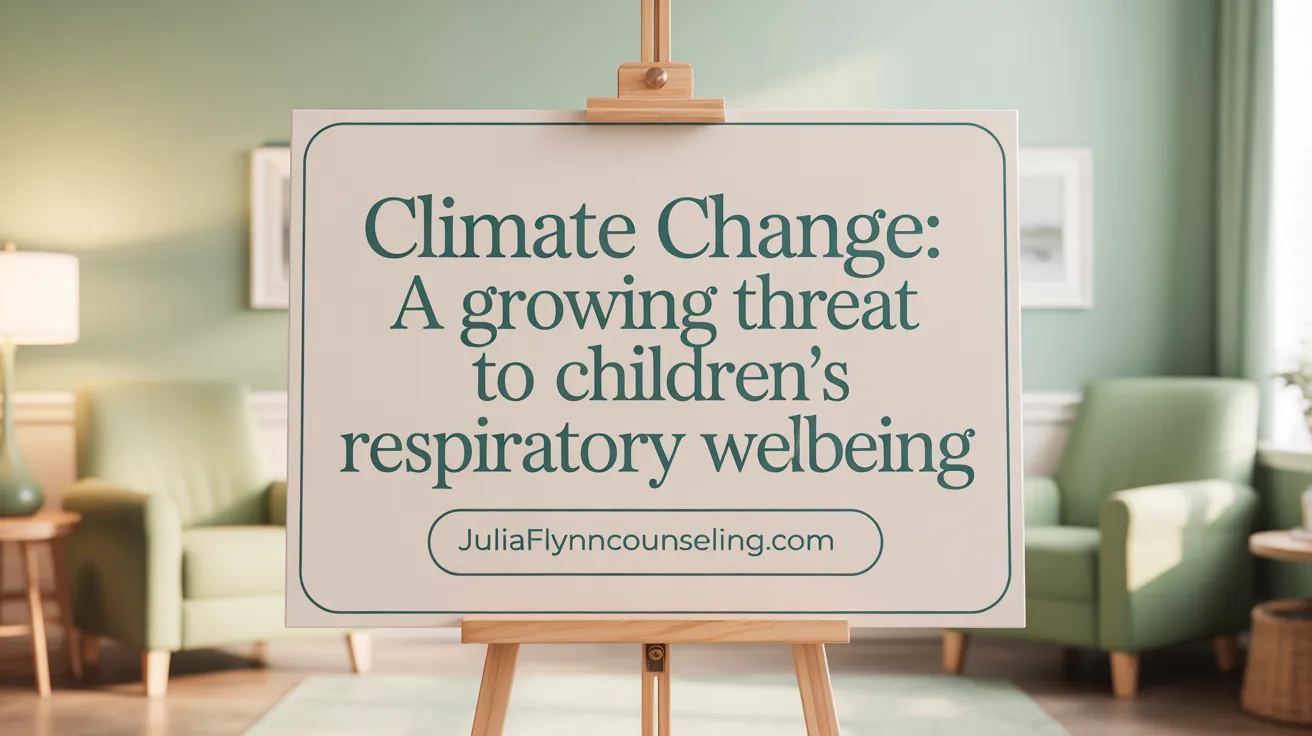
How do extreme weather events impact children's respiratory health?
Climate change has led to an increase in extreme weather events such as heat waves, cold spells, wildfires, and flooding. These events directly influence respiratory health by exposing children to pollutants, mold, and other respiratory irritants. For instance, wildfires release large amounts of smoke and particulate matter, which can cause immediate respiratory distress and exacerbate chronic conditions like asthma. Flooding can lead to mold growth indoors, affecting children’s lungs long-term and increasing susceptibility to respiratory infections.
What is the effect of longer pollen seasons and increased allergen exposure?
Rising temperatures and changing climate patterns extend pollen seasons, prolonging the period during which children are exposed to airborne allergens. Higher pollen levels can worsen allergic respiratory conditions, including allergic asthma and hay fever. The increased duration and intensity of pollen seasons mean children with allergies or asthma face a higher risk of exacerbations, with symptoms like wheezing, coughing, and difficulty breathing becoming more frequent and severe.
How does indoor mould growth affect children's respiratory health?
Climate change contributes to increased humidity and precipitation, fostering indoor mould growth. Mold spores are potent allergens and can irritate children's airways, particularly in those with asthma or allergies. Indoor mould exposure correlates with increased asthma symptoms, respiratory infections, and reduced lung function over time. Children with prolonged indoor mould exposure are especially vulnerable, as lung development continues into early adulthood.
In what ways do increased air pollution levels during heat waves affect children?
Heat waves associated with climate change cause higher concentrations of ground-level ozone and fine particulate matter (PM2.5). These pollutants worsen respiratory conditions, increasing asthma attacks and emergency visits among children. Elevated pollution levels during hot periods also impair lung development and function long-term. Additionally, pollution and heat together intensify the health risks, creating a synergistic effect that significantly impacts vulnerable pediatric populations.
| Effect | Cause | Impact on Children's Respiratory Health |
|---|---|---|
| Wildfire smoke exposure | Wildfires due to climate change | Respiratory distress, asthma exacerbation |
| Extended pollen seasons | Higher temperatures | Allergy and asthma symptom worsening |
| Indoor mould growth | Increased humidity and rains | Chronic asthma issues, lung development risks |
| Elevated ground-level ozone and PM2.5 | Heat waves, droughts | Increased asthma attacks, long-term lung effects |
As climate change continues to influence weather patterns, understanding these impacts is vital for developing strategies to protect children's respiratory health. Interventions include improving indoor air quality, reducing outdoor pollution, and developing early warning systems for extreme weather events.
Geographical and Demographic Variations in Wheezing Prevalence
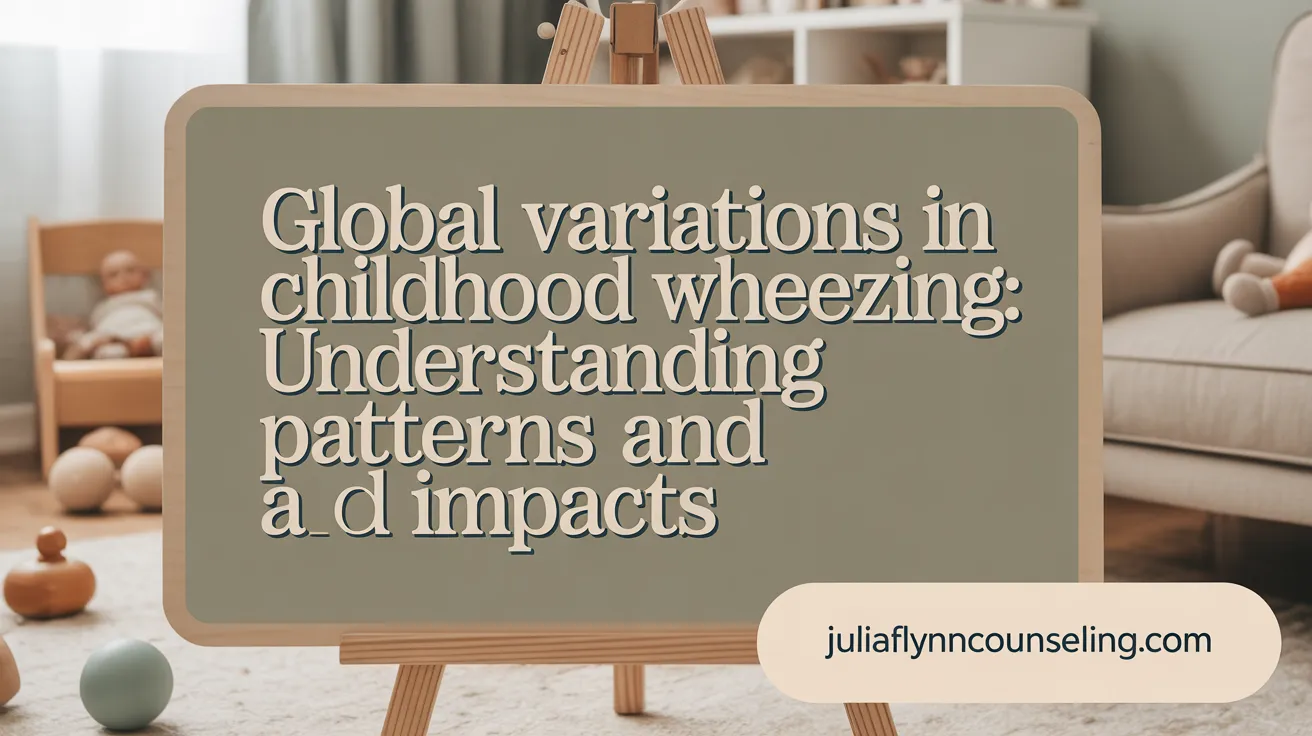
How does the prevalence of wheezing vary across different countries?
The prevalence of wheezing among children shows significant geographical differences. In 1994–5, the United Kingdom recorded the highest prevalence at 32.2%, indicating a substantial burden of respiratory issues in children. Conversely, Ethiopia reported a much lower rate of only 1.7% in 1996, highlighting vast disparities possibly due to environmental, socioeconomic, or genetic factors.
What are the temporal trends in wheezing prevalence in various countries?
Over time, the pattern of wheezing prevalence has changed markedly in several nations. Australian studies show that rates increased from the 1970s up to the early 1990s but have decreased since then, demonstrating the impact of evolving environmental and public health measures. Similarly, the UK experienced a rising trend in current wheeze prevalence, yet ISAAC studies noted a decline of 2.5% per year, contrasting with non-ISAAC studies that reported an annual increase of 2.6%. This demonstrates how study methodologies and external factors influence reported trends.
What factors influence these geographical and temporal differences?
Environmental factors such as urban pollution levels, climate, allergen exposure, and air quality significantly influence childhood wheezing prevalence. Genetic predispositions also play a role, with certain populations being more susceptible due to family histories of asthma or allergies. Socioeconomic status, healthcare access, and public health interventions further modify these patterns, highlighting the complex interplay of genetics and environment.
| Country | Prevalence (%) | Trends Over Time | Influencing Factors |
|---|---|---|---|
| UK | 32.2 (1994–5) | Increasing initially, then decreasing | Urban pollution, genetic factors, healthcare access |
| Ethiopia | 1.7 (1996) | Stable or unknown | Rural environment, lower pollution levels |
| Australia | Data varies | Rise in 1970s-1990s, decline thereafter | Environmental changes, improved health policies |
Understanding these variations is essential for targeted public health strategies. The differences underscore the importance of local environmental controls, genetic research, and healthcare systems in managing childhood wheezing globally.
Epidemiology of Cough in Children: Prevalence and Patterns

How does age and sex influence cough prevalence in children?
Cough is one of the most common reasons for pediatric healthcare visits across different age groups. About 10% of children tend to cough more than their peers, with prevalence increasing as children grow older. Younger children, particularly under the age of 1, are less prone to persistent cough, but boys in early childhood are more likely to cough than girls. Interestingly, after age 14, this trend reverses, and girls become more prone to cough than boys.
What types of cough are observed in children and how frequently do they occur?
Children exhibit various cough types, including dry hacking cough, nighttime cough, and cough triggered by physical activity or allergens. Night-time cough affects about 25% of children and can disturb sleep, often associated with allergic or respiratory conditions. The prevalence of cough triggered by specific factors like exercise, pollen, house dust, and certain foods tends to increase with age, reflecting different underlying causes.
How is pediatric cough related to wheezing?
Cough frequently occurs alongside wheezing, especially in children with respiratory conditions such as asthma or recurrent airway infections. Children with wheeze are roughly twice as likely to experience frequent coughs compared to those without wheezing. Additionally, children with wheeze more often suffer from complex cough patterns that are more persistent and troublesome.
Tables summarizing prevalence patterns and associations
| Age Group | Cough Prevalence | Common Causes | Association with Wheezing |
|---|---|---|---|
| Under 1 year | Lower | Respiratory infections | Less common but can indicate serious infections |
| 1–4 years | Moderate | Viral illnesses, allergies | Increased risk if wheezing is present |
| 5–14 years | Higher | Allergies, asthma, exercise | Strong association with wheezing and airway hyperresponsiveness |
| 15+ years | Highest | Allergic rhinitis, smoking | Cough often linked to asthma or allergic conditions |
Understanding these patterns helps healthcare providers tailor interventions and monitor children at higher risk for persistent coughs and related respiratory issues.
Clusters of Respiratory Symptom Patterns in Children and Clinical Implications
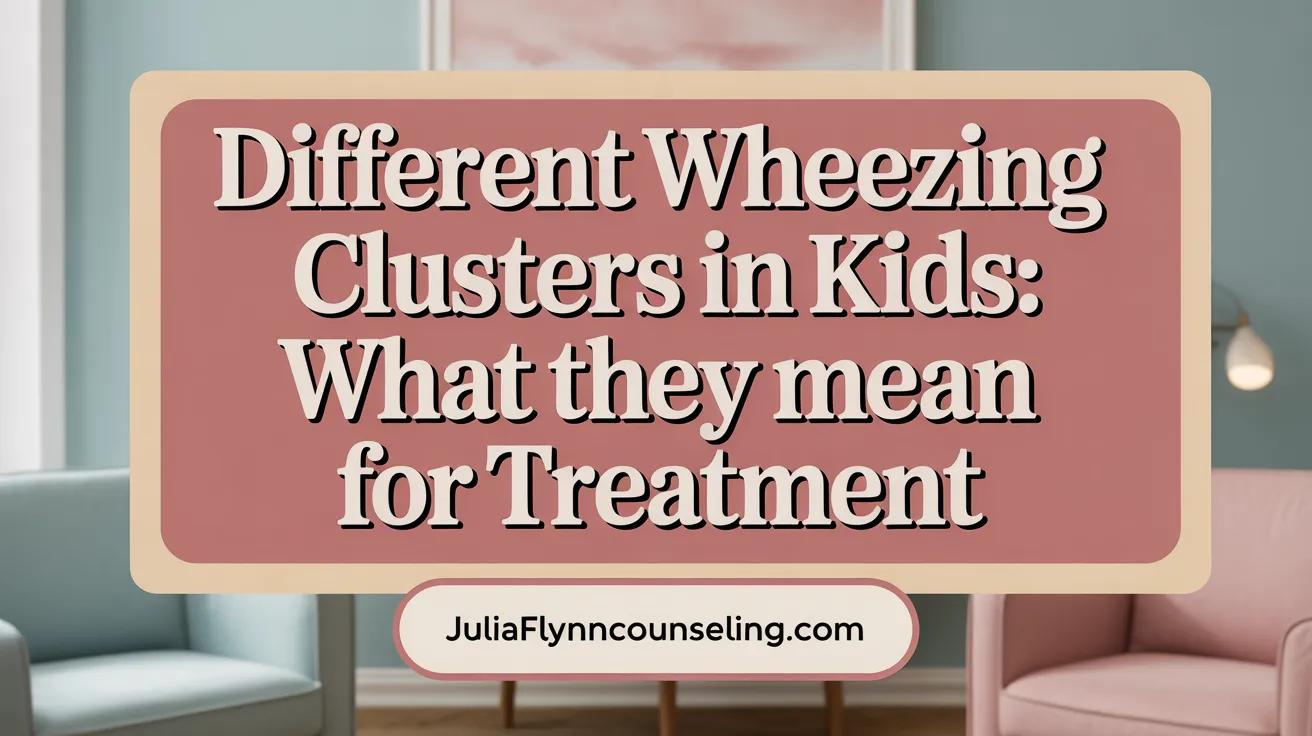
What are the different asthma subtypes based on symptom patterns?
Recent studies, particularly those analyzing data from UK childhood cohorts, have identified five distinct clusters of respiratory symptoms that reflect the underlying diversity of childhood wheezing disorders. These clusters are characterized by symptom frequency, triggers, and responses to environmental factors.
Two clusters are predominantly associated with asthma. The first, called 'persistent, multiple-trigger, more severe' (PMTS), includes children with frequent wheezing episodes triggered by various factors like cold air, viral infections, and allergens. These children tend to have lower lung function, higher levels of airway inflammation markers such as fractional exhaled nitric oxide (FeNO), and more frequent hospitalizations.
The second asthma-related cluster, 'persistent, triggered by infection, milder' (PIM), includes children whose wheezing is mainly initiated by viral infections and tends to be less severe.
A third significant cluster is related to post-bronchiolitis asthma, termed 'post-bronchiolitis resolving asthma' (PBRA). This group experienced wheezing following bronchiolitis episodes in infancy, often resolving by age 5-6 but with some continuing symptoms like chest tightness on waking.
Other clusters encompass patterns with less persistent symptoms and different triggers, emphasizing the heterogeneity of pediatric wheezing and asthma.
How do severity and lung function vary among these clusters?
Children within the high-risk asthma clusters, especially PMTS, display notable differences in clinical markers compared to milder groups. They generally have lower lung function parameters, such as reduced forced expiratory volume (FEV1), higher exposure to airway inflammation (indicated by elevated FeNO levels), and increased airway hyperresponsiveness.
These children also exhibit more frequent wheeze episodes, greater need for emergency care, and heightened sensitivity to environmental triggers.
In contrast, children in clusters associated with transient or milder wheezing tend to have relatively preserved lung function and lower inflammatory markers, suggesting less severe disease manifestation.
What is the potential for personalized treatments based on symptom clusters?
Understanding these distinct patterns offers promising avenues for personalized management strategies. For children in severe, multi-trigger clusters, aggressive treatment with inhaled corticosteroids, leukotriene modifiers, or biologics might be warranted to control inflammation and reduce exacerbations.
In milder clusters, emphasis can be placed on trigger avoidance, environmental control, and routine monitoring. Recognizing the pattern associated with post-bronchiolitis, for example, can help anticipate resolution prospects and tailor follow-up.
Targeted therapies based on cluster-specific features could optimize outcomes, reduce unnecessary medication use, and improve quality of life. Moreover, identifying children early within these patterns enables proactive intervention and better disease trajectory management.
| Cluster Name | Key Features | Typical Severity | Mainly Affected Age Group |
|---|---|---|---|
| PMTS | Multiple triggers, severe symptoms, high airway inflammation | High | 8-12 years |
| PIM | Viral triggers, milder symptoms | Moderate to mild | Under 8 years |
| PBRA | Post-bronchiolitis, symptoms often resolving | Mild | Under 6 years |
| Other | Less persistent, specific triggers | Variable | 5-15 years |
Role of Viral Respiratory Infections in Pediatric Asthma Exacerbations
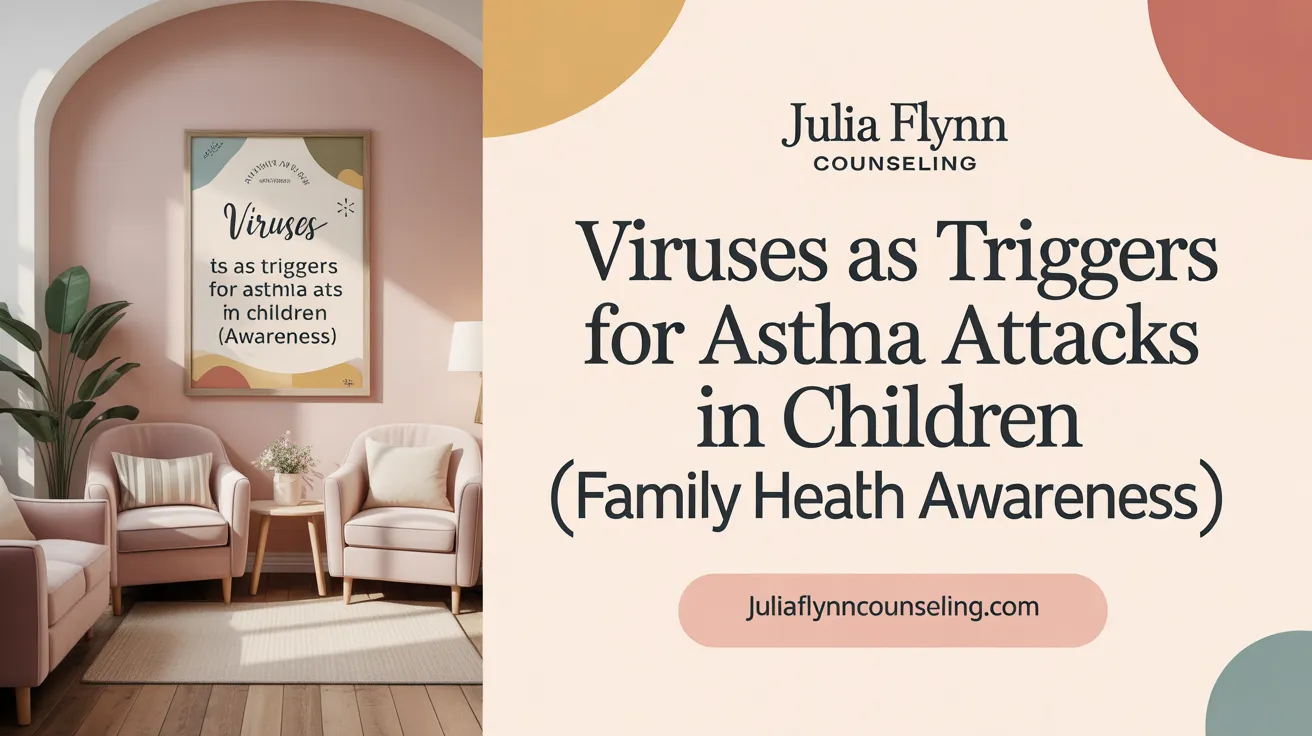
How do rhinoviruses serve as triggers for pediatric asthma?
Rhinoviruses are among the most common viral pathogens involved in childhood asthma exacerbations. They are responsible for up to 21.35% of wheezing episodes in children, making them significant contributors to respiratory flare-ups. These viruses often cause the inflammation of the airways, which can worsen existing asthma symptoms like wheezing, coughing, and shortness of breath. Children with heightened sensitivity to allergens and environmental triggers are particularly vulnerable to rhinovirus-induced attacks.
When do seasonal peaks of viral infections and asthma occur?
Viral infections, especially rhinoviruses, tend to peak during fall and spring, correlating with increased asthma exacerbations in children. Several geographic regions report a seasonal pattern, with surges in respiratory infections and asthma attacks aligning with viral activity. Notably, during the COVID-19 pandemic, strict mitigation measures such as social distancing and mask-wearing led to a drastic decline in viral transmission, which subsequently reduced the number of pediatric asthma-related emergencies.
In what ways did pandemic measures influence virus-related asthma flare-ups?
The COVID-19 pandemic brought about widespread implementation of mitigation strategies like lockdowns, social distancing, mask usage, and improved hygiene practices. These measures not only curtailed COVID-19 spread but also significantly decreased the prevalence of other respiratory viruses, including rhinoviruses. As a result, pediatric asthma exacerbations triggered by viral infections declined markedly during the pandemic. This highlights the impact of reduced viral exposure on asthma control and supports the importance of infection prevention in managing pediatric asthma.
| Aspect | Impact | Additional Notes |
|---|---|---|
| Rhinoviruses | Major trigger for asthma attacks | Responsible for over 21% of wheezing episodes |
| Seasonal peaks | Fall and spring | Correspond with higher viral circulation |
| Pandemic mitigation | Reduced infection rates | Led to fewer asthma exacerbations |
Indoor Air Quality in Schools and Its Impact on Respiratory Symptoms
What are the levels of PM10 and CO2 in classrooms?
Recent studies across several European countries, including Norway, Sweden, Denmark, France, and Italy, have revealed concerning levels of air pollutants inside classrooms. Most classrooms exceeded the US EPA standard of 50 micrograms per cubic meter (μg·m−3) for particulate matter with a 50% cut-off aerodynamic diameter of 10 micrometers (PM10). Indoor PM10 levels tend to be higher than outdoor levels, indicating that sources within the school environment largely contribute to these pollutants.
Additionally, carbon dioxide (CO2) levels frequently surpassed the threshold of 1,000 parts per million (ppm) in many classrooms. In fact, about 66% of classrooms studied had CO2 levels indicating poor ventilation, which may increase the risk of respiratory issues among students.
How do poor indoor air quality affect children's respiratory health?
Elevated PM10 and CO2 levels are linked to various respiratory symptoms. Children exposed to high PM10 levels tend to have reduced nasal patency, meaning their nasal passages are less open, which can impair breathing and filtration of airborne particles.
Furthermore, high CO2 concentrations—an indicator of inadequate ventilation—are associated with increased prevalence of symptoms such as dry cough and rhinitis. Specifically, children exposed to CO2 levels over 1,000 ppm had nearly three times higher odds (OR 2.99) of experiencing dry cough and double the risk (OR 2.07) of rhinitis.
Why is improving ventilation essential?
Improving indoor ventilation is crucial for reducing the concentration of harmful pollutants and thereby mitigating respiratory health risks. Measures such as increasing fresh air intake, using air filtration systems like HEPA filters, and ensuring proper air exchange can lower pollutant levels.
By addressing indoor air quality, schools can create healthier environments that reduce respiratory symptoms in children and support better overall health.
| Pollutant | Typical Levels in Classrooms | Health Effects | Mitigation Strategies |
|---|---|---|---|
| PM10 (micrograms/m³) | >50 μg·m−3 (most classrooms) | Reduced nasal airflow, increased respiratory symptoms | Ventilation improvements, air filters |
| CO2 (ppm) | >1,000 ppm (most classrooms) | Increased dry cough and rhinitis, poorer airway function | Enhance ventilation, regular air exchange |
Making indoor air quality a priority in schools can significantly reduce respiratory disturbances and improve the well-being of children during their critical developmental years.
Diagnosis and Recognition of Asthma and Wheezing Disorders in Children
Clinical signs and symptom patterns
Children with asthma and wheezing disorders often display a variety of symptoms that can vary with age, season, and triggers. Common signs include persistent wheezing, coughing (especially at night), shortness of breath, and a feeling of chest tightness. Symptoms tend to recur and may become more noticeable during specific seasons such as autumn or winter, especially after respiratory infections or allergen exposure.
Children aged 2 to 5 years may present with more subtle signs like coughing and wheezing, which can sometimes be mistaken for other illnesses. Older children typically report a mix of symptoms, with some experiencing frequent exacerbations related to allergens like pollen or mold, or viral infections.
Pattern recognition is crucial. For instance, increased symptoms during the early school year, following outdoor activities, or in cold weather can indicate asthma triggered by seasonal factors. Severe signs such as difficulty speaking, blue lips, or excessive effort in breathing suggest a medical emergency requiring immediate attention.
Diagnostic challenges in young children
Diagnosing asthma in children under five is often complex because traditional lung function tests like spirometry are difficult to perform reliably at this age. Their small airway size and inability to follow complex breathing instructions hinder accurate measurements.
Clinicians therefore rely on the child’s medical history, observed symptom patterns, response to trial medications, and signs of allergic sensitivities. Recurrent episodes of cough and wheezing, especially if triggered by viral illnesses or allergens, support the diagnosis.
Additional diagnostic tools include blood tests such as measuring eosinophil levels, allergy testing, and chest X-rays to rule out other conditions like infections or structural abnormalities. A trial of inhaled bronchodilators can also be used; symptomatic improvement after medication supports the diagnosis, especially when combined with clinical observations.
Use of spirometry and allergy tests
In children over six years old, spirometry is an essential diagnostic tool that measures airflow limitations and lung function, helping confirm asthma. The tests determine if there is reversible airway obstruction after administering a bronchodilator.
Allergy testing, including skin prick and blood tests, helps identify sensitivities to common allergens such as pollen, dust mites, pet dander, or molds. These results guide management and trigger avoidance strategies.
Assessment of exhaled nitric oxide (FeNO) levels is increasingly used to evaluate airway inflammation, particularly in allergic asthma phenotypes. It helps monitor disease activity and response to anti-inflammatory treatments.
Overall, the diagnosis combines clinical judgment with objective tests, considering age, symptom pattern, environmental exposures, and response to therapy. Early recognition and management are vital to prevent exacerbations and ensure optimal lung development.
| Diagnostic Method | Suitable Age Group | Main Purpose | Additional Info |
|---|---|---|---|
| Clinical history & symptom review | All ages | Identify pattern and triggers | Essential for initial assessment |
| Spirometry | >6 years | Measure lung function & reversibility | Gold standard in school-age children |
| Allergy testing | All ages | Detect allergen sensitivities | Guides environmental control |
| Exhaled nitric oxide (FeNO) | >6 years | Assess airway inflammation | Supports medication adjustments |
| Response to bronchodilators | Younger & older children | Confirm airway reversibility | Sometimes used when spirometry is challenging |
Understanding these signs and diagnostic challenges allows clinicians to identify asthma early and tailor management strategies effectively, reducing the risk of long-term lung damage and improving quality of life for affected children.
Management and Prevention Strategies for Pediatric Asthma and Wheezing
Medication types and action plans
Effective management of pediatric asthma involves a combination of medication and personalized action plans. Long-term control medications such as inhaled corticosteroids help reduce airway inflammation, while leukotriene modifiers like montelukast serve as supplementary options. Quick-relief inhalers, including albuterol, are essential for immediate symptom relief during asthma attacks. Developing an individualized asthma action plan with healthcare providers ensures timely medication use and symptom monitoring, helping children and caregivers recognize worsening symptoms early and avoid severe attacks.
Trigger avoidance strategies
Identifying and minimizing triggers is vital in controlling pediatric asthma and wheezing. Common triggers include allergens like pollen, mold spores, dust mites, pet dander, air pollution, cold weather, and respiratory infections. Environmental modifications, such as regular cleaning to reduce dust, using HEPA filters indoors, and avoiding outdoor activities during high pollen seasons, can significantly lower exposure. Additionally, managing indoor humidity promotes mold control, and avoiding tobacco smoke reduces irritants. Protective measures like masks during high pollution periods and proper ventilation further help prevent exacerbations.
Monitoring and education approaches
Regular monitoring of symptoms and lung function is essential for assessing control levels and adjusting treatment plans. Parents and children should be educated about recognizing early warning signs like increased coughing, wheezing, or shortness of breath. Proper inhaler technique and adherence to prescribed medications are crucial for effectiveness. Schools and caregivers should be involved in asthma management education, ensuring children can participate safely in physical activities. Moreover, routine follow-ups enable healthcare providers to tailor treatments to disease patterns, reducing hospital visits and improving quality of life.
| Aspect | Details | Additional Notes |
|---|---|---|
| Medication Types | Inhaled corticosteroids, leukotriene modifiers, beta-agonists, biologics | Tailored to severity and triggers |
| Trigger Avoidance | Reduce allergens, pollution, humidity control, smoking cessation | Environment management is critical |
| Monitoring Strategies | Symptom diaries, peak flow measurement, regular reviews | Enhances timely intervention |
| Educational Components | Inhaler use, trigger management, emergency signs recognition | Empowers children and caregivers |
Influence of Rhinitis and Sinusitis on Childhood Cough and Wheezing
How are rhinitis and sinusitis associated with recurrent cough and wheezing?
Research shows that both rhinitis and sinusitis are significantly linked to recurrent respiratory symptoms in children. Rhinitis, in particular, increases the risk of recurrent cough combined with wheezing, with an odds ratio of 2.47, indicating children with rhinitis are more than twice as likely to experience these combined symptoms. Sinusitis also raises the chance of recurring cough plus wheezing, with an odds ratio of 1.54. Additionally, rhinitis alone increases the likelihood of recurrent cough (OR 1.43) and wheezing (OR 1.30), highlighting its role as an independent risk factor for these respiratory issues.
What are the adjusted risk factors involved?
These associations remain significant even after controlling for various factors such as sex, skin test reactivity, and parental history of asthma. This suggests that rhinitis and sinusitis are independent contributors to respiratory symptoms. Furthermore, the study points out that recurrent cough and wheezing may be driven by different pathways, meaning management strategies should consider these distinctions.
What do these findings imply for clinical management?
Clinicians should recognize that children with rhinitis and sinusitis are at increased risk of persistent cough and wheezing. Effective management involves treating these underlying conditions, which can potentially reduce the frequency and severity of respiratory episodes. Addressing rhinitis through allergy control, nasal therapies, and reducing environmental triggers may improve outcomes. Early identification and targeted treatment can prevent progression to more severe or chronic respiratory diseases, especially in children predisposed due to other risk factors.
In summary, understanding the influence of rhinitis and sinusitis on recurrent cough and wheezing emphasizes the need for comprehensive assessments in pediatric respiratory care. Accurate diagnosis and integrated treatment approaches can significantly improve the quality of life for affected children.
Effect of Extreme Temperatures on Pediatric Respiratory Health
Cold and heat as asthma triggers
Extreme temperatures, both cold and hot, significantly influence pediatric respiratory health. Cold weather is closely associated with increased asthma exacerbations, leading to symptoms like wheezing, coughing, and shortness of breath. During colder months, children are more prone to respiratory infections, which can trigger asthma attacks. Conversely, hot weather can also worsen respiratory symptoms due to increased air pollution levels and higher pollen concentrations.
Impact on emergency visits
Research shows a clear link between temperature extremes and increased emergency department visits for respiratory issues in children. Cold spells often correlate with surges in hospitalizations for wheezing and asthma attacks. Similarly, heatwaves can cause asthma exacerbations, partly because high temperatures elevate ground-level ozone and other pollutants, which irritate the airways. Studies using models like ARIMA indicate that monitoring temperature patterns helps predict peak periods for respiratory-related emergency visits.
Synergistic effects with pollution and allergens
Extreme temperatures do not act alone; they amplify the effects of air pollution and allergens. During heatwaves, elevated ozone and particulate matter (PM2.5 and PM10) levels exacerbate airway inflammation. Likewise, cold weather can increase indoor mold growth and allergen exposure, worsening conditions like allergic asthma. The combined impact of weather extremes, pollution, and allergens creates a synergistic effect, leading to higher rates of respiratory distress among children.
The interplay between temperature and environmental factors highlights the importance of adaptive measures, such as air quality management and public health strategies, to mitigate risks to vulnerable children. Recognizing the influence of climate extremes on respiratory health is crucial in developing effective prevention and response plans.
Advances and Challenges in Understanding Childhood Wheezing Disorders
How do multiple triggers indicate severity in childhood wheezing disorders?
Children experiencing wheezing triggered by multiple factors, such as cold, viral infections, dust, or pollen, tend to have more severe asthma symptoms. Recent research from UK cohorts shows that children with high asthma prevalence and multiple triggers often display worse lung function, higher airway inflammation, and frequent hospitalizations. These patterns suggest that the presence of several triggers not only indicates heightened disease activity but also predicts a more troublesome and persistent condition.
What are the underlying pathophysiological mechanisms of childhood wheezing?
Different clusters identified in recent studies highlight diverse pathophysiological pathways. For example, children with persistent asthma and multiple triggers often exhibit airway inflammation characterized by elevated FeNO levels, airway hyperresponsiveness, and allergic sensitization. Conversely, some children, especially those with wheezing related to viral infections like RSV, show transient symptoms that resolve over time, indicating different underlying mechanisms. These distinctions help clinicians personalize treatment and understand disease progression.
What are the future research directions for childhood wheezing?
Future research should focus on refining the classification of wheezing phenotypes to better predict long-term outcomes. Larger longitudinal studies exploring genetic, environmental, and microbiome influences could reveal why certain children develop severe or persistent wheezing. Investigating interventions targeting specific triggers and underlying mechanisms might improve management. Additionally, advancing diagnostic tools, including biomarkers and imaging, could facilitate earlier detection and tailored therapies. Emphasis on environmental improvements, such as indoor air quality, will also be crucial in reducing disease burden.
| Topic | Key Insights | Future Directions |
|---|---|---|
| Triggers and severity | Multiple triggers correlate with increased severity and worse outcomes | Focus on managing multiple triggers and personalized approaches |
| Pathophysiology | Inflammation, hyperresponsiveness, and allergic pathways vary between phenotypes | Develop targeted therapies based on mechanisms |
| Research and management strategies | Need for better phenotyping, environmental control, and early interventions | Investing in biomarkers, genetics, and environmental policies |
Understanding the complexities of childhood wheezing progression requires continued research into these areas, with the goal of improving prognosis and quality of life for affected children.
Conclusion: Advancing Care for Childhood Respiratory Health
The complex interplay of causes, seasonal and environmental factors, and evolving epidemiological trends underscores the importance of comprehensive approaches to managing cough and wheezing in children. Advances in understanding inflammatory phenotypes, viral triggers, and the impact of climate and air pollution inform targeted interventions. Mitigation of environmental risks, improved indoor air quality, and personalized clinical management, supported by ongoing research, hold promise to reduce the burden of pediatric respiratory illnesses. Awareness of seasonal patterns and emerging challenges, such as those brought by the COVID-19 pandemic, further equips clinicians and caregivers to support children’s respiratory health effectively.
References
- Unforeseen changes in seasonality of pediatric respiratory illnesses ...
- Seasonal variation of pediatric asthma exacerbations and its ...
- Systematic review of worldwide variations of the prevalence of ...
- Seasonality of Asthma: A Retrospective Population Study | Pediatrics
- Climate change and children's respiratory health - ScienceDirect.com
- Association of children wheezing diseases with meteorological and ...
- A comparison of seasonal trends in asthma exacerbations among ...
